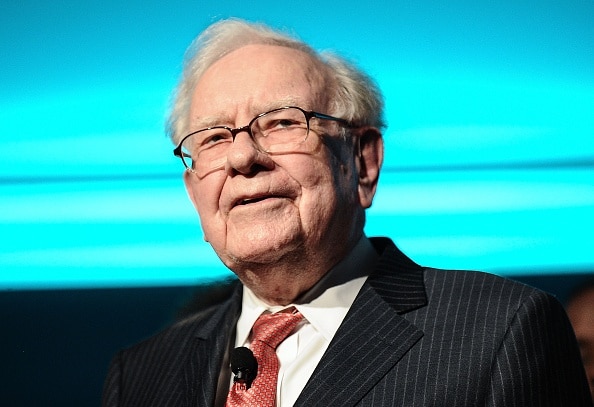From pig-manure power to wind farms, Virginia’s Dominion Energy is transforming itself into a renewable energy powerhouse—and Berkshire Hathaway’s cash will only accelerate the process.
“Pigs are extremely efficient,” says Kraig Westerbeek, who oversees renewable energy production for Smithfield Foods, the world’s biggest pork producer. For what farmers put into them, they get a lot out. “They eat 2.4 pounds of feed per pound of gain,” he says. “And they produce more gas per pound of live weight.”
Westerbeek is talking about greenhouse gases emitted by the millions of pigs his industrial farms produce each year. Inside his giant barns, manure and urine ooze through holes in a concrete floor before getting piped to open-air ponds called lagoons—some the size of four football fields. In these lakes of livestock waste naturally occurring bacteria—called methanogens—continue to feed and fart out more gas. All this methane ends up in the atmosphere, and that is bad news for the planet. Pound for pound, methane packs 25 times the greenhouse effect as the standard environmental villain, carbon dioxide. To make matters worse, it’s long been standard practice for farmers to spray the odoriferous lagoon waste on croplands as rich fertilizer—subjecting Smithfield and its former hog-producing subsidiary, Murphy-Brown, to environmental litigation and scathing publicity as local communities cope with the stench and health risks.
But today, Westerbeek has a better story to tell. In recent years Smithfield has been working to perfect methods of capping lagoons with heavy plastic covers that trap the methane (and much of the reek). The gas inflates the plastic domes in amounts sufficient for people to walk on—like an extremely gross air mattress. Smithfield has partnered with Richmond, Virginia-based utility giant Dominion Energy to market the gas. Under the plan, Dominion will siphon the pig gas out of these anaerobic digesters, inject it into interstate pipelines and sell it to green-minded customers looking to cut their carbon footprints. The end result is arguably the cleanest electricity in the nation, says Dominion Chief Operating Officer Diane Leopold. “It’s a win-win-win.” With renewable energy projects, she says, “it’s about how many boxes you can check. This one has an extra box.”
Over the next decade, Dominion aims to invest $650 million into agriculture-derived gas projects. Smithfield will contribute another $250 million. The expected result: 8 billion cubic feet per year of livestock gas—thus preventing the emissions equivalent of 3.5 million tons per year of carbon dioxide. That’s like taking 750,000 cars permanently off the road, or planting 60 million new trees every year. It may sound gimmicky, but replacing just 12% of fossil fuel gas with methane captured from pigs, dairy cows or landfills “can make everything net zero” on an emissions basis, says Leopold.
Loading...
Helping to underwrite those investments will be the $10 billion ($4 billion cash; $6 billion assumed debt) that Berkshire Hathaway said Monday it will pay for Dominion’s 7,700 miles of long-haul gas pipelines. Dominion had to sell its pipelines to fund investment into renewables, says Hugh Wynne at SSR. And that gave Warren Buffett the opportunity to double down on Berkshire’s pipeline holdings, at a good price. “Buffett is taking advantage of their situation,” says Wynne.
For Buffett, the deal complements Berkshire Hathaway’s existing 16,000-mile pipeline network, thus supporting his bet that natural gas will put the final bullet into coal and be a mainstay of U.S. power generation for decades to come. Berkshire already owns massive wind farms that generate 6,600 megawatts across the West—so it is also knee-deep in renewable energy. And Berkshire’s money will do double environmental duty, as Dominion will use some of the cash to help build its green future. All told, Dominion expects to make some $55 billion of investments by 2035 into low-carbon energy sources—spurred on by Virginia’s aggressive new mandate for 100% carbon-free electricity by 2045.
What a departure this is from the old Dominion Energy. The utility was founded as Virginia Railway & Power Co. in 1909 by Frank Jay Gould, son of robber baron Jay Gould. Its roots are firmly planted in Appalachian coal. Even as late as 1995, when its current CEO Tom Farrell came on board as general counsel, more than half of its power came from burning coal.
Over the past 15 years, Dominion has slashed its carbon dioxide emissions by 52%, first by replacing coal-fired power plants with cheap and plentiful natural gas, and more recently by investing in solar and other renewables. In a decade the carbon intensity of Dominion’s power generation has fallen from more than 1,200 lbs. of CO2 per megawatt-hour to less than 600 pounds. This is in the lowest quartile of American electric utilities, according to consultancy MJ Bradley Group.
A big contributing factor: the changing economics of renewable power. “Solar was not affordable; five years ago we didn’t have a single panel,” Farrell says. Now Dominion, which had profits of $1.4 billion on revenues of $16.5 billion in 2019 (and whose dividend yields 5%), is the fourth-largest solar operator in the country.
Dominion is far from alone in its rush into renewables. Since 2003—when coal provided 51% of America’s electricity—the nation’s power utilities have dramatically cut back their combustion of coal in favor of renewables and cleaner-burning natural gas. Currently, coal fuels just 17% of electricity, and renewables have surpassed it for the first time ever. This trend is just getting started. With its new 2045 mandate for zero-carbon electricity, Virginia joins California, New Mexico, New York, Washington and Hawaii.
After $40 million in R&D write-offs they settled on perfecting the systems being deployed today, whereby each farm’s manure lagoons have been turned into anaerobic digesters that capture its gas and sends it via pipeline to a centralized processing plant. After about three weeks in the digester, what’s left of the manure comes out the other end as sterile, nutrient-rich organic matter used as fertilizer or even livestock bedding. The now less odoriferous water is sprayed on crop fields. The Dominion/Smithfield joint venture will deploy systems at hog operations in North Carolina, Virginia and Utah.
Dominion is also working with startup Vanguard Renewables, which deploys similar systems at dairy farms. Vanguard is backed by the foundation of eBay billionaire Jeff Skoll, among others. It already has 42 diary farms signed up. Vanguard’s president, Kevin Chase, says that even though so-called dairy digesters had been perfected in heavily subsidized Europe over the past decade, owners of natural gas pipelines were initially skeptical at letting in bovine gas. “It was guilty until proven innocent,” says Chase, whose Wellesley, Massachusetts-based company has since landed long-term contracts with Vermont Gas, Middlebury College and Polar Beverages.
Though plenty of municipal sewage systems utilize similar digesters to process human waste, these aren’t as cost-effective because of the plethora of other stuff people put down the drain. “Animal waste is cleaner and more homogenous,” says Chase, because we know that the hogs and cows are eating and what’s coming out. A solution for chicken waste remains an elusive “Holy Grail” because its high ammonia content makes it extremely caustic and tough to process.
Renewable fuels are a priority at the EPA. To ensure that refineries and utilities use the mandated volumes of green fuels, the EPA requires that they either generate or trade for compliance credits (called Renewable Identification Numbers). Thanks to its negative-carbon attributes, livestock gas qualifies for the highest-value credits—meaning that customers could pay Dominion ten times more for hog gas than for the same quantity of gas fracked out of shale formations. That could be enough to generate an additional $100 million a year in revenue.
Not everyone is impressed by the potential for renewable natural gas. “Putting it into a pipeline is better than letting it go loose,” says William McDonough, visionary architect and author of Cradle To Cradle, about the need for a circular carbon economy. “But it’s still a fugitive carbon. To say it’s the cleanest energy is not correct, if you’re considering climate change.”
McDonough favors using ever-cheaper solar and wind power to electrolyze water into hydrogen. “Green hydrogen” and other climate-friendly efforts are already in the works at Dominion. COO Leopold says they’ve successfully blended 10% hydrogen into their gas-fired power plants; “It’s expensive at the moment, but solar was expensive, too.”
In the years ahead, Dominion could well become Virginia’s biggest private landowner due to all the solar panels it expects to install. And it’s begun replacing diesel-powered school buses with electric ones statewide. Offshore in the Atlantic Ocean, Dominion this summer has installed the first two of what could be hundreds of 800-feet-tall offshore wind turbines generating 2,600 megawatts. (Reflecting its renewable energy efforts, Dominion has been named to Forbes’ annual Just 100 list of socially responsible companies.)
Even after Dominion has transitioned from nearly all-coal to zero-carbon in a generation, it will still be looking for the next best thing. Maybe nuclear fusion? “I don’t doubt it,” says Farrell. “A sustainable company is one that adapts to challenges and weathers the storm.”
– Christopher Helman, Forbes Staff, Energy
Loading...





















